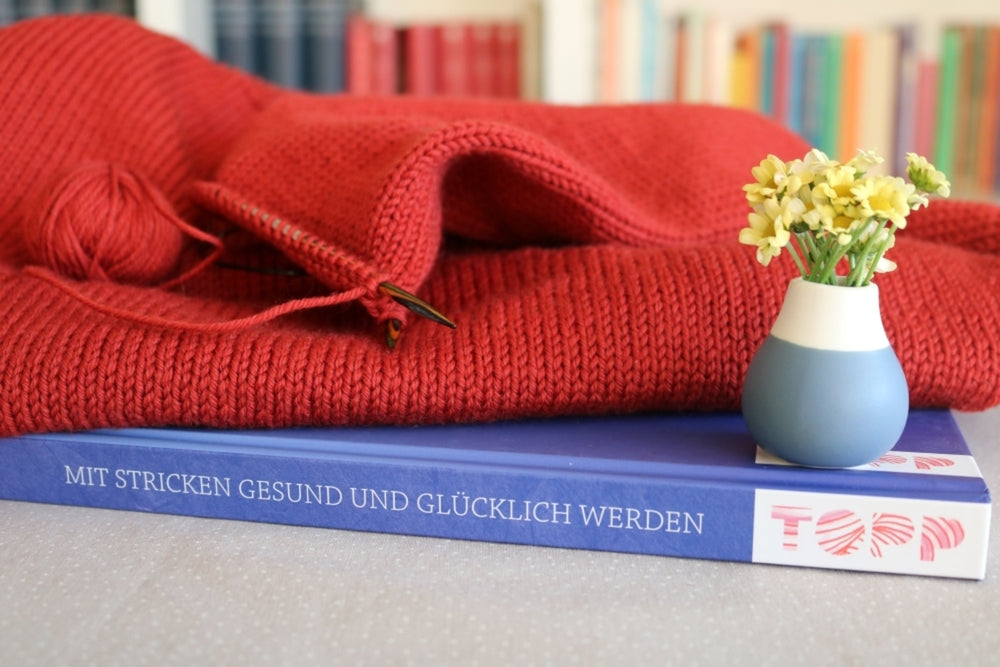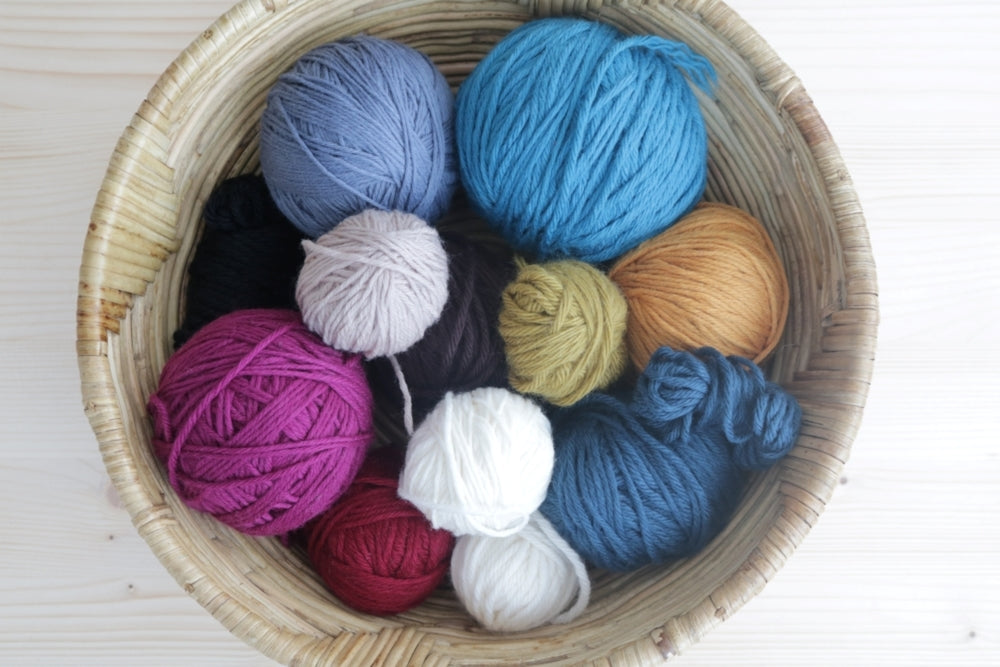"Did you knit that yourself?" I sometimes hear when we're out and about in our favourite knitwear. Then I see incredulous looks full of admiration and don't really know what to say - flattered and embarrassed at the same time. "I'd be happy to teach you. It's not difficult at all!" I reply euphorically. Because I firmly believe that anyone who wants to knit can learn. And you should!
Today, I'm sharing a few tips and ideas on learning to knit - maybe you know someone who loves knitting? Why not encourage them to give it a try? You could be a knitting teacher yourself - or pass on this article to support them.
The basic equipment
At the beginning, knitting needles and some wool are enough. But the choice is huge! So here's a little tip: choose a yarn with a smooth surface that is neither too thin nor too thick. I think Lovely Merino Treat is perfect for beginners

It is great to work with 4.00 mm needles. I personally particularly like wooden or bamboo needles as they are not as smooth and slippery as metal needles. They also feel pleasantly warm and don't rattle. A circular knitting needle makes it easier to get started as it is versatile and you can keep everything together so nicely. You can learn how to wind a ball of wool from a skein here.
The basics
There are many ways to learn how to knit: If you like to teach yourself, there are countless YouTube tutorials available that not only show and explain the basics, but can also be very helpful later on at an advanced level. For very impatient newcomers: In this video, for example, the absolute beginning is shown. It's also best to get yourself a basic book where you can look up everything specifically. I myself get on well with the book "Knitting - The Standard Work".

If, like me, you prefer to learn from and with people, then find someone who will patiently show you everything. Maybe there are knitters in your neighbourhood. Otherwise, find out if there are any knitting courses in your area. Many yarn shops offer workshops, or you can attend a traditional VHS course. Perhaps there is also a knitting club in your neighbourhood. Ask at the wool shop or in your local community, as this is often where informal knitting groups are organised. I'm sure you'll find good support there and get to know nice people as well as knitting.
The first piece of knitting
Once you have mastered the basics, such as casting on, knit and purl stitches and casting off, you will want to try your first real piece of knitting. It's not complicated at all if you bear the following points in mind: Start by choosing something simple, ideally knitted in garter stitch only - such as our shawls Tatto, Drachenfels or Joyful.

In the knitting instructions you will find all the important information about the required amount of yarn, needle size and stitch sample. You can actually disregard the latter for shawls, as it is often just a matter of making sure you have enough yarn. However, if you are starting your first jumper, it is essential that you familiarise yourself with the subject beforehand in order to achieve the right size and fit. And when buying several skeins of the same colour, make sure you use the same colour section so that your plain knitwear shines in a uniformly beautiful shade.
The instructions
Reading knitting instructions can be confusing at first, as abbreviations are often used. However, the meanings are in the legend and you will quickly get used to them. I recommend that you always read through the entire instructions before you start knitting. This not only allows you to see in advance whether everything is clear to you, but also gives you an understanding of the structure of the design. Marking the details for the selected size also makes it easier for you to keep an overview.

With a lace, cable or jacquard pattern, you will also come across knitting fonts. These are graphics that use symbols and colours to visualise what is to be knitted where and how. The legend explains everything so that you will soon understand the sign language. Sometimes the knitting script is omitted and the continuous text explains what to do.
And then, as is so often the case: just get started, try it out and gain experience. You never stop learning, even when knitting. And the best thing is: if in doubt, you can always try again. At the end of the day, it's homemade - and beautiful for that reason alone.With this in mind: Have fun and happy knitting!




